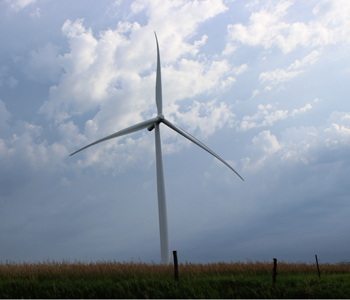Clean Power Plan Next Steps
posted
on Friday, February 19, 2016
 Since EPA finalized the Clean Power Plan – a landmark standard that will reduce carbon pollution by 32 percent by 2030 – in August 2015, opponents of the have mounted a legal challenge in the D.C. Circuit Court of Appeals. The opponents, which include a group of 27 states, industry/business groups and utilities, filed petitions asking the D.C. Circuit to “stay” the rule, effectively halting its implementation until the conclusion of litigation. Late last month, the D.C. Circuit denied their request.
Since EPA finalized the Clean Power Plan – a landmark standard that will reduce carbon pollution by 32 percent by 2030 – in August 2015, opponents of the have mounted a legal challenge in the D.C. Circuit Court of Appeals. The opponents, which include a group of 27 states, industry/business groups and utilities, filed petitions asking the D.C. Circuit to “stay” the rule, effectively halting its implementation until the conclusion of litigation. Late last month, the D.C. Circuit denied their request.
Following that decision, Clean Power Plan opponents requested a stay from the Supreme Court of the United States (SCOTUS). On February 9, in an unexpected move, SCOTUS granted their request. The decision to stay the regulation was unprecedented – leaving many states questioning whether to continue compliance planning efforts until a final judgment has been made. The death of Justice Antonin Scalia’s last week, which significantly changed the Supreme Court’s composition, adds further complexity to this dialogue (Justice Scalia joined the 5-4 majority in granting the stay).
So far, Iowa is moving forward with a stakeholder meeting on the Clean Power Plan: DNR will convene a meeting next Monday, February 22, in Council Bluffs and gather input from stakeholders on next steps.
Council staff will be at the meeting, advocating that Iowa continue its current momentum in planning for carbon reductions and a clean energy future, emphasizing that doing so will only benefit our health and our economy.
Carbon pollution reductions from power plants have been found to reduce other secondary pollutants, helping to prevent approximately 3,500 premature deaths in the U.S. per year. To that end, the Iowa Public Health Association joined 28 other health organizations in urging the nation’s governors to continue moving forward with state planning to reduce carbon pollution, despite the stay on Clean Power Plan.
The American Wind Energy Association also expressed support for the Clean Power Plan following news of the stay, noting that “the wind industry has demonstrated that we can reduce carbon emissions while reducing electric bills.”
Iowa is currently a national clean energy leader, and ensuring Iowa remains at the forefront will depend on a number of policies and initiatives, and the Clean Power Plan is an important one on that list.
- carbon pollution
- clean energy